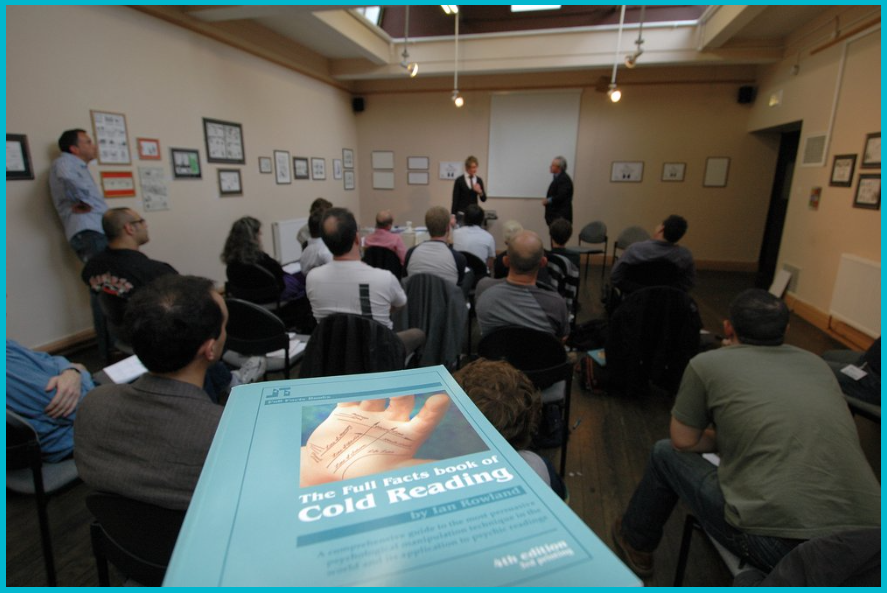How to Cold Read Someone: A Complete Beginner’s Guide
How to Cold Read Someone: A Complete Beginner’s Guide
If you’ve ever wondered how psychics, fortune tellers, or mentalists seem to know so much about strangers, you’ve probably brushed against cold reading. At its core, cold reading is a set of communication techniques, not supernatural power. Learning how to cold read someone is about psychology, observation, and language.
In this post, we’ll break down how to cold read someone, step by step, so you can understand the principles and begin practising responsibly.
Why Learn How to Cold Read Someone?
Before exploring the techniques, it’s worth asking why people want to know how to cold read someone. The answer is simple: connection. Cold reading lets you create a sense of rapport, gain insights through observation, and make statements that feel personal and accurate.
Entertainers use it to amaze audiences, salespeople use similar methods to build trust, and everyday people can use it to improve their social awareness. Learning how to cold read someone can boost your communication skills in almost any setting.
Step 1: Understand the Psychology
The first part of learning how to cold read someone is grasping the psychology behind it. People naturally want to feel understood, so they interpret vague statements as deeply personal. This is known as the Barnum effect.
Another key principle is confirmation bias. People remember the “hits” that feel accurate and ignore the “misses.” When you learn how to cold read someone, you can lean on these tendencies to make your statements more powerful.
Step 2: Start with General Statements
When practising how to cold read someone, begin with broad statements that apply to many people. Examples include:
“You sometimes doubt yourself but are stronger than people realise.”
“You like being social, but you also need time alone to recharge.”
“You have untapped potential that you haven’t fully explored.”
These opening lines build rapport because almost everyone relates to them. From there, you can refine based on the person’s reactions.
Step 3: Observe Closely
A critical part of how to cold read someone is observation. Pay attention to body language, tone of voice, and subtle reactions. A nod, smile, or hesitation gives you instant feedback.
Skilled cold readers adjust in real time, shaping their next statements based on what they notice. This feedback loop is the engine of successful cold reading.
Step 4: Use Classic Techniques
Anyone learning how to cold read someone should study the classic techniques used by professionals:
The Rainbow Ruse – Assigning both qualities: “You’re confident but sometimes insecure.”
The Jacques Statement – Suggesting someone feels unrecognised, which resonates widely.
Fishing – Asking open-ended questions that invite the sitter to provide details.
Shotgunning – Offering multiple options and watching which one sticks.
These tools are the backbone of how to cold read someone effectively.
Step 5: Refine with Feedback
As you practise how to cold read someone, remember that the real skill lies in refinement. If a statement doesn’t land, adjust smoothly. For example, if you say, “I sense you’re close to a sibling,” and they shake their head, you can pivot: “Perhaps it’s a cousin or friend who feels like family.”
The ability to adapt without breaking flow is one of the hallmarks of knowing how to cold read someone.
Step 6: Practise Responsibly
Learning how to cold read someone is powerful, but with that power comes responsibility. Cold reading should be used for entertainment, rapport, or self-development—not to exploit or deceive.
Ethical practice ensures that your skills build trust rather than break it. When you learn how to cold read someone, make your intentions clear, especially if you’re using it as part of a performance or demonstration.
Common Mistakes Beginners Make
When exploring how to cold read someone, avoid these common pitfalls:
Being too specific too early – Start broad before narrowing in.
Talking too much – Great cold readers listen more than they speak.
Forgetting empathy – Cold reading should make people feel seen, not judged.
Neglecting practice – Like any skill, fluency comes from repetition.
Recognising these mistakes early will make your journey smoother.
Learning how to cold read someone isn’t about psychic powers it’s about psychology, observation, and connection. By starting with general statements, paying attention to feedback, and using classic techniques, you can quickly learn the fundamentals.
Remember, the purpose of learning how to cold read someone should be to build rapport, entertain, or strengthen communication skills. Used ethically, it’s a fascinating way to understand people better and connect more deeply.
The next time you see a psychic or mentalist at work, you’ll know exactly what’s happening behind the curtain and you’ll have the tools to try it yourself.





